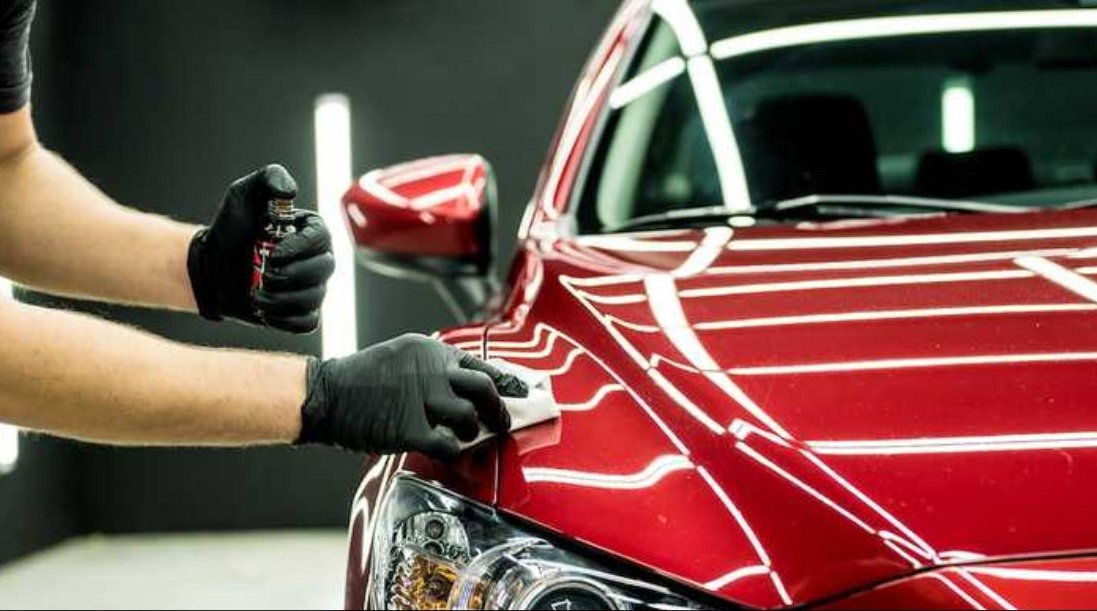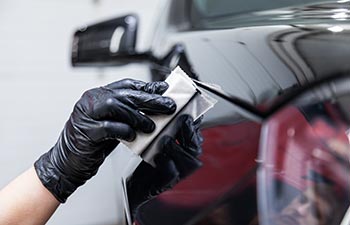Single Stage Paint Correction: The Ultimate Makeover for Your Car
Your car has been through countless journeys, bearing the brunt of the elements, and its paint may have lost some of its original lustre. But don't worry, there's an invaluable tool at your disposal: single stage paint correction.
Whether your vehicle is a treasured classic or a reliable daily driver, single stage paint correction is a meticulous process that promises to reveal your beloved ride's hidden brilliance. So get ready to take your automotive aesthetics to the next level!
What is Single Stage Paint Correction?
Single stage paint correction is a skilled process that necessitates the use of specialized tools and products such as machine polishers, various polishing compounds, and knowledge of paint thickness and condition. It aims to restore the depth, colour, and clarity of the paint, ultimately restoring the vehicle's appearance to a showroom-like shine. It is a detailed and meticulous automotive refinishing process that is most commonly used on older vehicles or those with single-stage paint systems.
To understand it in greater detail, let's break down the concept.
Single Stage Paint
Single stage paint is a type of automotive paint system that is commonly found on older vehicles, typically those manufactured before the 1980s. Single stage paint is simpler than modern two-stage paint systems, which include a basecoat (colour) and a clearcoat (protective layer). It combines colour and protection into a single layer. This paint system is known for its durability and colour depth, but it is more susceptible to wear and environmental factors over time.
Paint Correction
The process of rejuvenating a vehicle's paint finish by removing imperfections and restoring its lustre and clarity is known as paint correction. Imperfections may include:
• Scratches: Surface-level or deeper scratches that detract from the appearance of the paint.
• Swirl Marks: Swirl marks are fine circular or spiral marks caused by poor washing, drying, or polishing techniques.
• Oxidation: The natural breakdown of paint over time that results in a dull or chalky appearance.
• Hazing: A cloudy or milky appearance in the paint, often caused by previous detailing attempts or environmental factors.
What does Single Stage Paint Correction Entail?
Inspection and Evaluation
• The process starts with a thorough inspection of the vehicle's paint. The goal is to detect flaws like scratches, swirl marks, oxidation, and fading.
• During this assessment, the extent of correction required is determined.
Surface Preparation
• Proper surface preparation is essential for single stage paint correction. The vehicle is meticulously washed and dried to remove any dirt or contaminants that may interfere with the correction process.
• To remove embedded contaminants such as tar or tree sap, decontamination techniques may be used.
• Trim, rubber, and glass are all carefully masked off to protect them during correction.
Compounding
• Compounding is the first step in the correction process. An abrasive compound and a machine polisher help to remove deeper imperfections, such as scratches, swirl marks and oxidation.
• Compounding levels the paint's surface, effectively removing a thin layer of the paint to eliminate imperfections.
Polishing
• After compounding, use a less abrasive polish and a finer foam or microfiber pad to refine the finish.
• This step removes any remaining swirl marks and haze and improves the gloss of the paint.
Finishing Touches
• The final stages include additional polishing and finishing to ensure a smooth, flawless, and high-gloss appearance.
• These final steps are essential for achieving a showroom-quality finish.
Evaluation
• After the single stage paint correction, inspect the corrected paint thoroughly under a variety of lighting conditions to ensure that the desired results are obtained.
• Any remaining flaws can be addressed with additional touch-ups or corrections.
Protection
• A protective layer of wax or sealant helps to maintain and protect the newly corrected finish.
• This layer enhances the paint's durability, provides a barrier against environmental factors, and further enhances its appearance.
Navigating the Challenges of Single Stage Paint Correction
Single stage paint correction is a rewarding but time-consuming endeavour that aims to revitalize the aesthetics of older vehicles using a single layer paint system. This process, however, is not without its difficulties. It is critical to comprehend and anticipate the difficulties that may arise along the way. From the thinness of the paint to the vulnerability of swirl marks and colour fading, these obstacles require skill, experience, and meticulous attention to detail to overcome.
Thinness of Paint
Single stage paint is typically thinner than the clearcoat layer in modern two-stage paint systems. As there is less material to work with, it is easier to remove too much paint during correction, which can result in paint thinning and damage.
Swirl Marks
Swirl marks and fine scratches introduced during the correction process are more likely with single stage paint. It can often be difficult to achieve a swirl-free finish in single stage paint correction.
Colour Fading
Due to UV rays and environmental factors, single stage paint may have faded over time. In cases where the vehicle's paint has aged and faded, achieving an exact colour match during correction can be a challenge. This may require special techniques and additional steps, like blending.
Older Vehicle Conditions
Vehicles with single stage paint are usually older, and their paint may have endured decades of wear and tear. This can cause a variety of problems, including deeper scratches, corrosion, and paint delamination, which may or may not be fully correctable.
Skill and Experience
Single stage paint correction is a skill-intensive process that demands a deep understanding of paint systems, polishing techniques, and the use of specialized equipment. Without proper knowledge and experience, it's easy to make mistakes that can harm the paint.
Looking After Your Newly Restored Vehicle
After performing a single stage paint correction on your car, maintaining the newly restored finish is crucial to ensure the longevity of the correction and keep your vehicle looking its best.
Regular Washing
• Wash your car regularly to remove dust, dirt, and other contaminants that can degrade the paint's appearance.
• Use a high-quality car wash soap and a soft microfiber wash mitt to prevent swirl marks and scratches.
Two-Bucket Method
• When washing, use the two-bucket method: one bucket for soapy water and another for rinsing your wash mitt. This prevents dirt from being transferred back onto the paint.
Avoid Automatic Car Washes
• Avoid automatic car washes with abrasive brushes that can damage the paint. Choose touchless or hand washes instead.
Regular Maintenance Detailing
• Perform regular maintenance detailing sessions after the single stage paint correction to maintain the paint's shine. This includes light polishing and wax or sealant reapplication as needed.
Conclusion
In the world of automotive aesthetics, single stage paint correction stands as a beacon of hope for enthusiasts and owners of older vehicles. This meticulous process is not just about correcting paint imperfections; it's a journey that reveals the true beauty hidden beneath the surface. The journey of single stage paint correction is not just about your car; it's about your passion, your dedication, and your love for the open road. Embrace it, savour it, and let it drive you to unveil the hidden beauty in every mile you travel.



